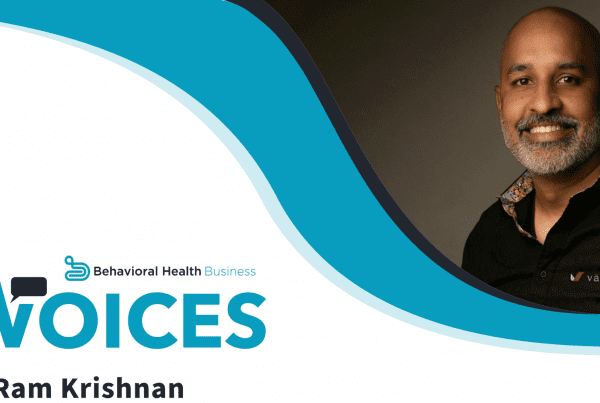As artificial intelligence continues to evolve, its applications in behavioral health are generating a wide range of responses, from optimism to concern. While some providers view AI as a valuable tool to improve patient care, others express hesitation, questioning its role in such a deeply human-centered field.
At Valant, we believe that AI has the potential to support clinicians in meaningful ways. As expressed in a recent episode of the Empowered Patient Podcast, Valant CEO Ram Krishnan offers a grounded perspective: “There’s a wide spectrum of what that term [AI] means to everybody. And I think what we all feel comfortable with is when technology becomes an aid to our core job, taking some of the wasted time off our plate.”
Valant’s launch of AI capabilities reflects this clinician-first mindset. Created in response to existing pain points for therapists, AI Notes Assist is designed specifically to reduce administrative burden. Through AI Notes’ capabilities to streamline and automate clinical documentation, the feature gives back valuable time to providers so they can focus on what matters most, whether it be patient care, reduced burnout or scalable growth.
Krishnan shares that the development of AI Notes Assist, created by behavioral health experts for behavioral health experts, was built in a cautious and practical, pragmatic approach with the purpose to serve human providers.
Krishnan, offers three guiding thoughts for behavioral health therapists on the exciting future of AI adoption in mental health:
Like EHRs, AI is most useful to therapists when it’s tailored specifically to their industry. AI features built for generic healthcare may not understand the language of behavioral health or the workflow of the average mental health practice.
When searching for AI solutions to integrate into your workflow, look for products that are built with the following in mind:
- Behavioral health vs. generic healthcare
- Facility type: inpatient vs. outpatient
- Client type: demographics, diagnosis, solo vs. group treatment, etc.
1. AI integration happens at the pain points
What slows down your flow at work? Which tasks pile up and hang over your head? What drags down your earning potential? These kinds of questions suggest where AI might most readily be helpful in the workflow of a practice. Practices typically shop for new tech when faced with specific problems, so pain points are the inroad for adoption of AI.
For example, front staff who struggle with interruptions can cut down on phone calls by using automated appointment reminders and scheduling processes. Therapists can reduce non-billable documentation hours by using AI to transcribe and document sessions. Billers can increase their clean claims rate with AI software that catches mistakes in the billing process. The list goes on.
As providers and staff experience the results of AI assistance, AI becomes a valued tool.
“People will eventually feel AI’s innate value, and you’ll see a mainstream introduction,” explains Krishnan.
Targeted AI applications can improve results in all areas of practice management and treatment:
• Administration—the nuts and bolts of managing the practice and communicating with patients.
• Clinical—diagnosis, treatment, and clinical documentation.
• Billing—claims and payment collection.
• Compliance—data security, following rules and regulations.
2. Complex applications aren’t mainstream yet
What about complex AI applications for actual treatment? Will all practices soon use AI to analyze transcripts of client sessions to flag warning signs? Conduct risk assessment? Suggest treatment options?
“I think those are much later-term applications,” Krishnan says. They remain possibilities, but certainly aren’t mainstream. The here-and-now priority for most practices is using AI to make work easier, so that providers can meet the growing demand for services.
3. Data security is the biggest barrier to AI adoption
Interestingly, the fear of replacement isn’t the biggest barrier to AI adoption for mental health providers according to Valant’s research. Providers’ most pressing concern is data security and privacy. Ninety-eight percent of providers in Valant’s research indicated data security as a major worry when it comes to AI.
This is why companies that create AI for behavioral health must be transparent about their data safety capabilities. Before you use any AI feature, make sure it’s compliant with HIPAA, as well as state and federal regulations. A reputable company should be able to clearly explain the security features of its AI product.
Bottom Line: Outcomes Drive Adoption
The bottom line, says Krishnan, is that the positive outcomes from using AI speak for themselves. This will drive AI adoption more than anything.
“The more AI is doing a great job of matching the right patient to the right provider, the more likely that provider will see that patient for a longer period of time, and that patient is going to get better. The more AI ensures that the claim I am submitting gets approved and paid, the more productive I can be, and within my capacity,” he says by way of example.
“The adoption of AI, I think, is inevitable,” he adds.
AI won’t be replacing therapists any time soon. But the efficiency, positive outcomes, innovation, and clinical support made possible by AI are poised to sweep the industry.









